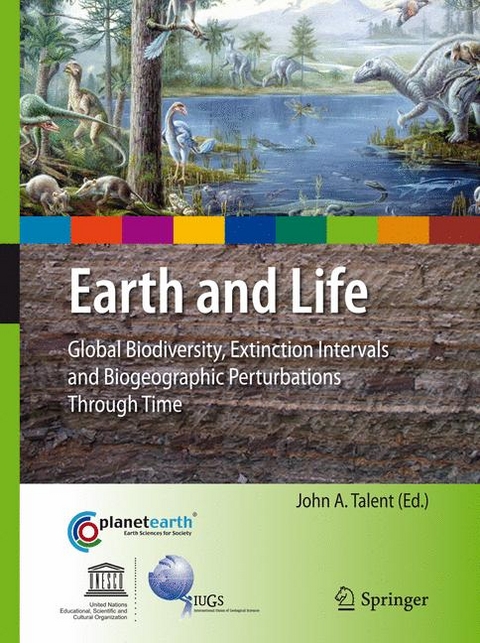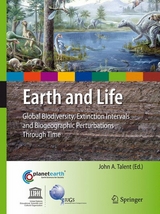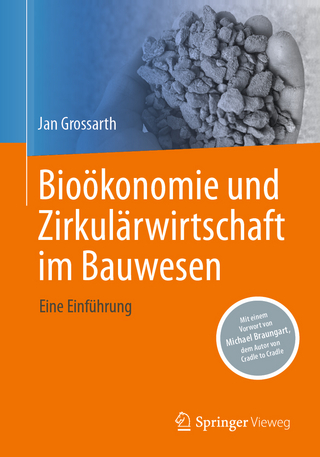Earth and Life
- Titel ist leider vergriffen;
keine Neuauflage - Artikel merken
This volume focuses on the broad pattern of increasing biodiversity through time, and recurrent events of minor and major ecosphere reorganization. Intense scrutiny is devoted to the pattern of physical (including isotopic), sedimentary and biotic circumstances through the time intervals during which life crises occurred. These events affected terrestrial, lacustrine and estuarine ecosystems, locally and globally, but have affected continental shelf ecosystems and even deep ocean ecosystems. The pattern of these events is the backdrop against which modelling the pattern of future environmental change needs to be evaluated.
John Talent's degrees are from the University of Melbourne. After brief periods as UNESCO Professor at the University of Dhaka, and Caltech he taught at Macquarie University, Sydney, where he is now Emeritus Professor of Earth and Planetary Sciences. His fieldwork has been undertaken in many parts of southern and central Asia and Australia. He was President of the International Paleontological Association and is now a member of Geological Society of Australia and India.
Series foreword.-
Series preface.-
Dedication.-
Preface.-
Introduction.-
Authors, their addresses and contributions.-
Articles of a general nature.-
-Phanerozoic marine biodiversity: a fresh look at data, methods, patterns and processes.-
-Coordinated stasis reconsidered: a perspective after fifteen years.-
-Whilst this planet has gone cycling on: what role for periodic astronomical phenomena in large-scale patterns in the history of life?.-
-Climate change through time.-
-Development of intertidal biotas through Phanerozoic time.-
-Marine sclerobiofacies: encrusting and endolithic communities on shells through time and space.-
-Brachiopods and their auloporid epibionts in the Devonian of Boulonnais (France).-
-Fossil fish taphonomy and the contribution of microfossils to documenting Devonian vertebrate history.-
-The Messel Pit fossil site — the legacy of the environment and life of the Eocene.-
Evolution exemplified by specific phyla or classes.-
-Evolutionary scenario of the early history of the Animal Kingdom: evidence from Precambrian (Ediacaran) Weng’an and Early Cambrian Maotianshan biotas, China.-
-The Ordovician Radiation: macroevolutionary crossroads of the Phanerozoic.-
-Phylogeny of Palaeozoic gastropods inferred from their ontogeny.-
-Palaeozoic innovations in the micro- and megafossil plant record: from the earliest plant spores to the earliest seeds.-
-Tentaculitids — an enigmatic group of Palaeozoic fossils.-
-Palaeozoic ammonoids — diversity and development of conch morphology.-
-Quantitative approach to diversity and decline in Late Palaeozoic trilobites.-
-Devonian cladid crinoid evolution, diversity, and first and last occurrences: summary observations.-
-Palaeoecology, aerodynamics and the origins of avian flight.-
Global extinction events and biocrises.-
-The Ireviken Event in the Boree Creek Formation, New South Wales, Australia.-
-Isotope geochemistry and plankton response to the Ireviken (earliest Wenlock) and Cyrtograptus lundgreni events, Cape Phillips Formation, Arctic Canada.-
-Late Ludfordian (Silurian) correlations and the Lau Global Extinction Event.-
-The late Middle Devonian (Givetian) global Taghanic Biocrisis in its type area (northern Appalachian Basin): geologically rapid faunal transitions driven by global and local environmental changes.-
-The Permian — a time of major evolutions and revolutions in the history of life.-
-Millennial physical events and the end-Permian mass mortality in the western Palaeo-Tethys: timing and primary causes.-
-Chicxulub Impact, Deccan Traps and the K-T mass extinction.-
-After mass extinction but no recovery: new tales of `Dead Clade Walking’ from Austral and Boreal post-K-Pg (Danian) assemblages.-
-Fungi, a driving force in normalization of the terrestrial carbon cycle following the end-Cretaceous extinction.-
Palaeobiogeography.-
-Changes in the pattern of brachiopod biogeography in northern Asia through Early and Middle Devonian times.-
-The paleogeography of Pennsylvanian crinoids and blastoids.-
-Biogeography of Jurassic and Early Cretaceous ostracods from Western Australia and what they reveal about the evolution of the Indian Ocean.-
-Cretaceous continental bridges, insularity, and vicariance in the southern hemisphere: which route did dinosaurs take?.-
-Palaeobiogeography of Mesozoic mammals-revisited.-
Cenozoic era.-
-Cenozoic environmental shifts.-
-Miocene asteroid impacts: proposed effects on the biogeography and extinction patterns of eastern North American gastropods.-
-The rise of Australian marsupials: a synopsis of biostratigraphic, phylogenetic, palaeoecologic and palaeobiogeographic understanding.-
A Perspective.-
| Reihe/Serie | International Year of Planet Earth |
|---|---|
| Zusatzinfo | XXVII, 1100 p. |
| Verlagsort | Dordrecht |
| Sprache | englisch |
| Themenwelt | Naturwissenschaften ► Biologie ► Ökologie / Naturschutz |
| Naturwissenschaften ► Geowissenschaften ► Geografie / Kartografie | |
| ISBN-10 | 90-481-3427-7 / 9048134277 |
| ISBN-13 | 978-90-481-3427-4 / 9789048134274 |
| Zustand | Neuware |
| Haben Sie eine Frage zum Produkt? |
aus dem Bereich




